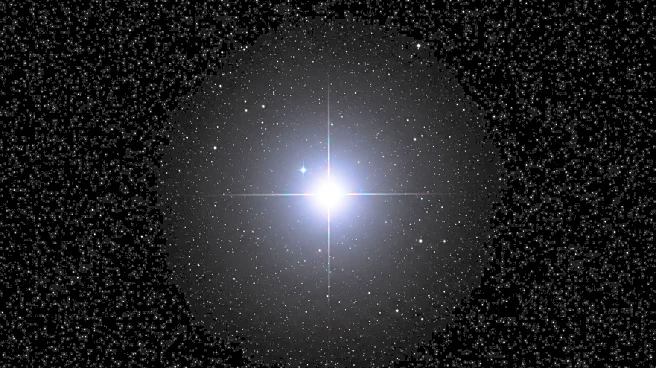What's Happening?
Astronomers from the University of Chicago have identified a new ultra-metal-poor star, GDR3_526285, in the Milky Way's halo using data from ESA's Gaia satellite. This star is one of the most metal-poor stars detected, with iron abundances below -4. It is believed to be a descendant of the first stars, offering insights into the early universe's conditions. The star was confirmed through multi-band photometry and high-resolution spectroscopy, revealing its metallicity level at -4.82 dex and a mass of about 0.78 solar masses.
Why It's Important?
The discovery of GDR3_526285 is crucial for understanding the formation and evolution of the early universe. Ultra-metal-poor stars are rare and provide valuable information about the primordial conditions and processes that shaped the universe. This star's low metallicity and association with the Magellanic Clouds suggest it formed from dust-cooled gas, offering clues about the chemical composition and dynamics of early cosmic environments. Such findings can refine models of star formation and galaxy evolution.
What's Next?
Further analysis of GDR3_526285's kinematics and chemical composition will enhance understanding of its origins and relationship with the Magellanic Clouds. Continued observations and studies of similar stars could reveal more about the early universe's structure and the role of satellite galaxies in star formation. Collaborative efforts with other observatories and research institutions will be essential for advancing knowledge in this field.













